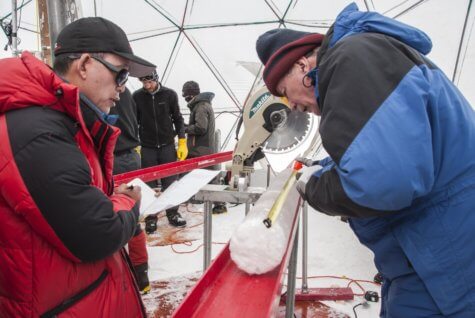COLUMBUS, Ohio — Glaciers can preserve all sorts of relics from the distant past. So could they also be home to a pandemic from prehistoric times as well? It’s possible. A team from The Ohio State University has discovered a collection of viruses that have never been seen before in the ice of a glacier in China.
Scientists say the viral samples date back nearly 15,000 years and may reveal how pathogens evolve over the centuries. Of the 33 viruses found trapped in the ice of the Tibetan Plateau, the team considers 28 to be completely novel. About half of them also seem to have survived specifically because of the freezing conditions.
“These glaciers were formed gradually, and along with dust and gases, many, many viruses were also deposited in that ice,” says lead author Zhi-Ping Zhong, a researcher at Ohio State’s Byrd Polar and Climate Research Center, in a university release. “The glaciers in western China are not well-studied, and our goal is to use this information to reflect past environments. And viruses are a part of those environments.”
A viral timeline of Earth’s past

Scientists collected the core samples from the Guliya ice cap in 2015. This ice sits 22,000 feet above sea level and researchers say layers continued to accumulate there year after year for thousands of years.
Study authors say this created a sort of timeline of everything in the atmosphere at different periods in history; trapping microbes and showing how the climate has changed since 13,000 B.C.
“These are viruses that would have thrived in extreme environments,” adds Matthew Sullivan, co-author of the study and professor of microbiology at Ohio State. “These viruses have signatures of genes that help them infect cells in cold environments – just surreal genetic signatures for how a virus is able to survive in extreme conditions. These are not easy signatures to pull out, and the method that Zhi-Ping developed to decontaminate the cores and to study microbes and viruses in ice could help us search for these genetic sequences in other extreme icy environments – Mars, for example, the moon, or closer to home in Earth’s Atacama Desert.”
Where did these ancient viruses come from?
Viruses don’t share a common genetic background, so researchers say that figuring out the origin of a new virus takes several steps. For the 33 viruses unearthed in China, the team compared gene sets of known viruses to the novel strains.
The study discovered that four viruses from the Guliya ice cap belong to a virus family that typically infects bacteria. They also found that the viral concentrations of these germs was much lower than amounts scientists find in oceans or soil.
The team also says all of these new viruses likely originated in soil or plants, not in animals or early humans.
“We know very little about viruses and microbes in these extreme environments, and what is actually there,” says senior author Lonnie Thompson, a distinguished university professor of earth sciences at Ohio State. “The documentation and understanding of that is extremely important: How do bacteria and viruses respond to climate change? What happens when we go from an ice age to a warm period like we’re in now?”
The study appears in the journal Microbiome.
